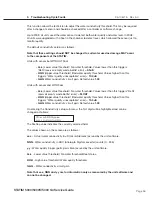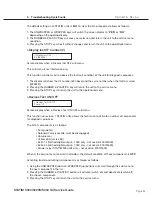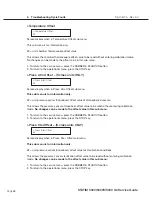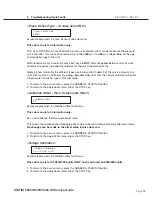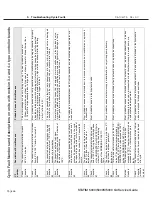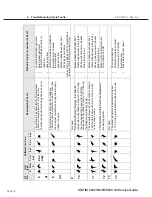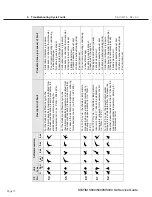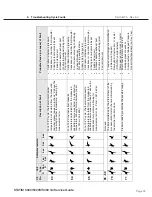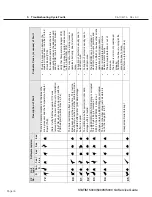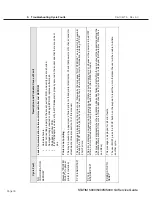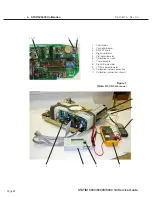
Page 67
STAT
IM 2000/2000S
Service Guide
96-106775 Rev 5.0
3. Troubleshooting Cycle Faults
STAT
IM
5000/5000S/5000 G4 Service Guide
Cycle Fault Numbers and descriptions on units with revision
2.x/5.x/6.x and 7.x type controller boards (1.xx/2.xx/4.xx/5.xx and
6.xx software)
Tips for using this guide.
Unlike the previous guide (rev 3.x and 4.x controller boards) where all cycle fault numbers and
descriptions are common to those specific controller board revisions irrespective of software, the
following guide has been generated to cover all units from the introduction of controller board
revision 2.x and have been standardized across the unit range of all STAT
im
units irrespective of
controller board or software revision.
There will be some cases of course where because of the unit type, a particular fault will not
be appropriate (e.g. pressure faults on non S units where a pressure transducer is not fitted) so
establishing the following criteria before looking up a fault reference will assist in easier diagnosis.
Note also that the ‘probable cause(s)’ of any fault shown in the following chart are a GUIDE
only. There may be multiple faults and the fault displayed may be either the first problem
the software has identified or as the result of a different but related issue. For example, a
blown thermal fuse is only symptomatic of a boiler overheat, and not necessarily the cause
of the failure, which may be through poor water delivery, so it would be useful to undertake
an assessment of the unit as described earlier in this chapter under: “Basic mechanical
diagnostics.”
Before referring to the following guide, establish the following where possible:
•
STAT
im
type (2000/5000)
•
Model type (‘S’ or non ‘S’)
•
Controller board revision (2.xx/5.xx etc.)
–
TIP:
this is usually found on the bottom right hand corner of the controller
board except for revision 7 board where it may be located top right or bottom
left depending on manufacturing revision. If in doubt, refer to Chapter 1 of this
manual.
•
Software revision. (S2S2R415 for example, the R415 being the important part)
–
TIP:
this is usually found on the main microprocessor label, but the easiest
method is by powering up the unit. On all of the revisions refered to in this
chart, this will appear on the top right hand corner of the LCD display for a few
seconds after power up. If in doubt, refer to chapter 1 of this manual.
•
Cycle Fault number.
Note that there may be more than one of the same cycle fault which may be the same, but have
different causes depending on the derivative of the unit, so when you have established these
details, go to the CF number and use the ‘unit type’ and ‘software revision’ guide to establish if
this particular CF is relevant (
3
) or not (
6
) as the case may be.



